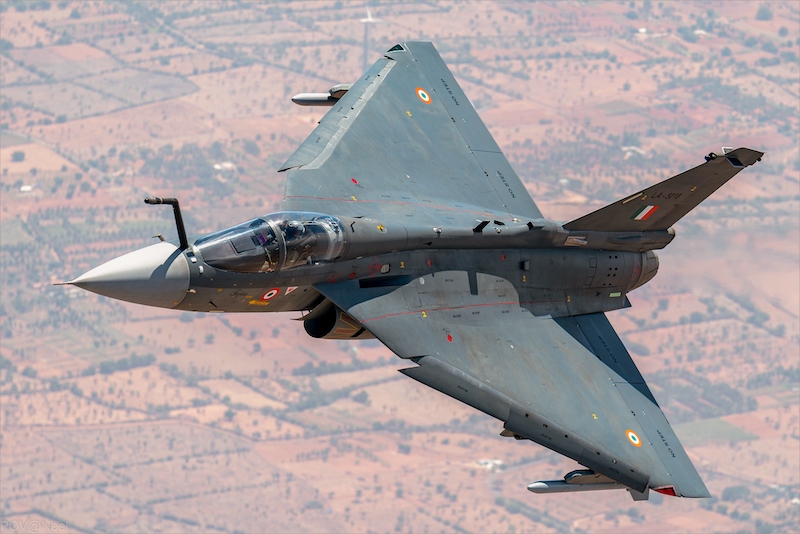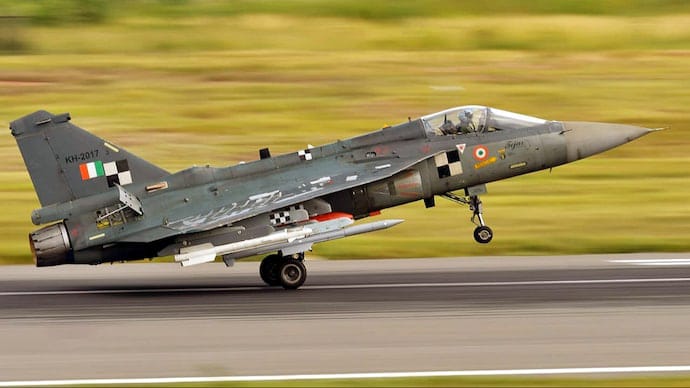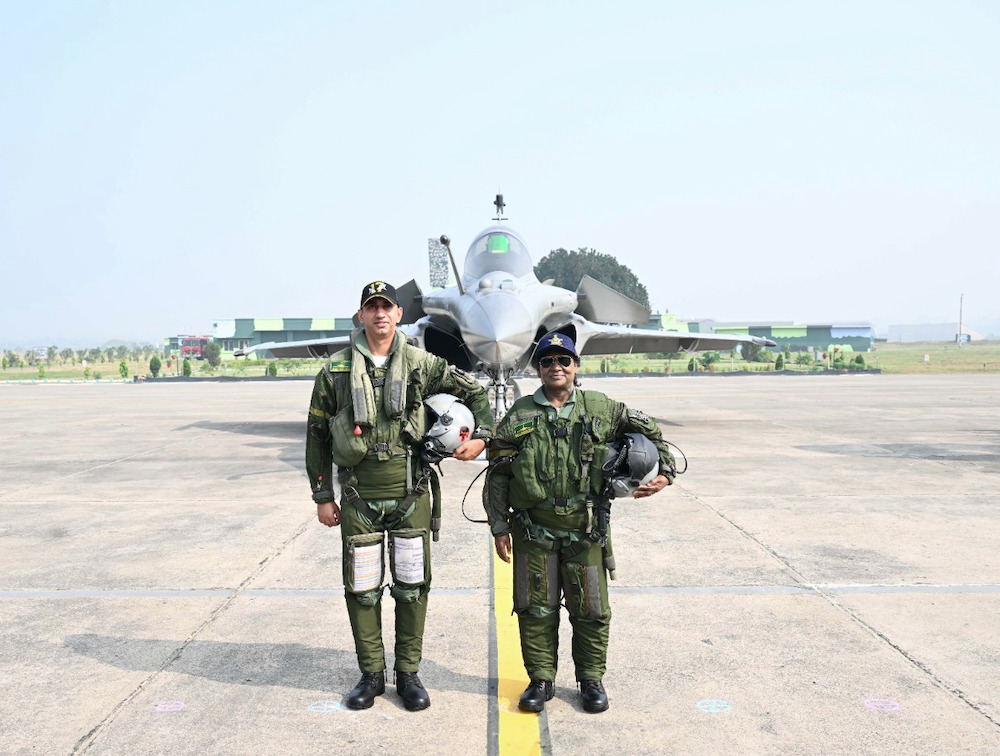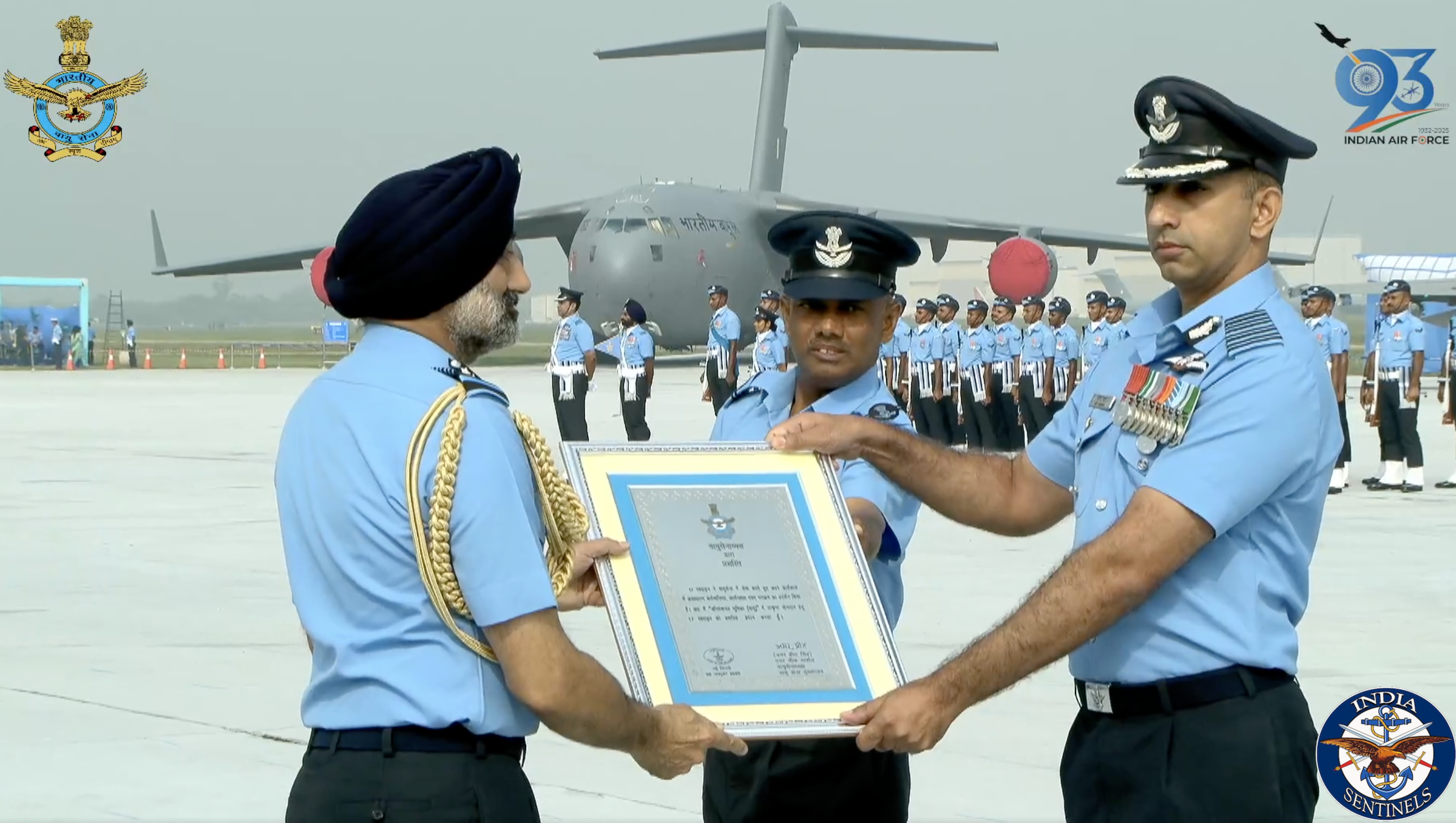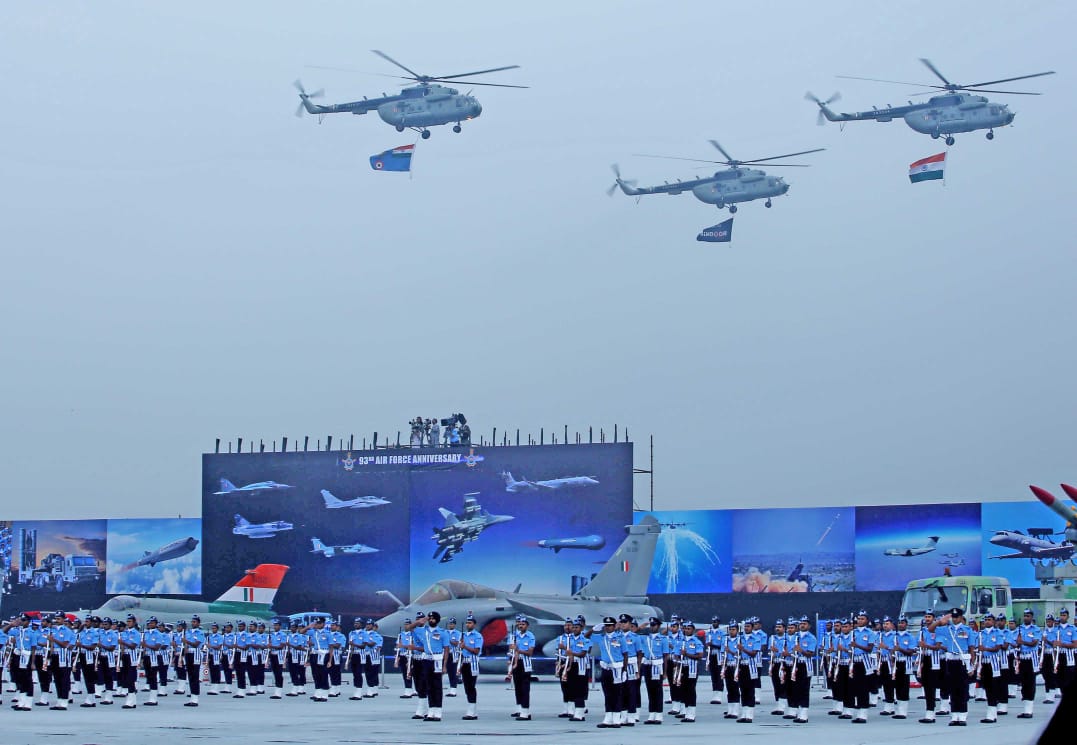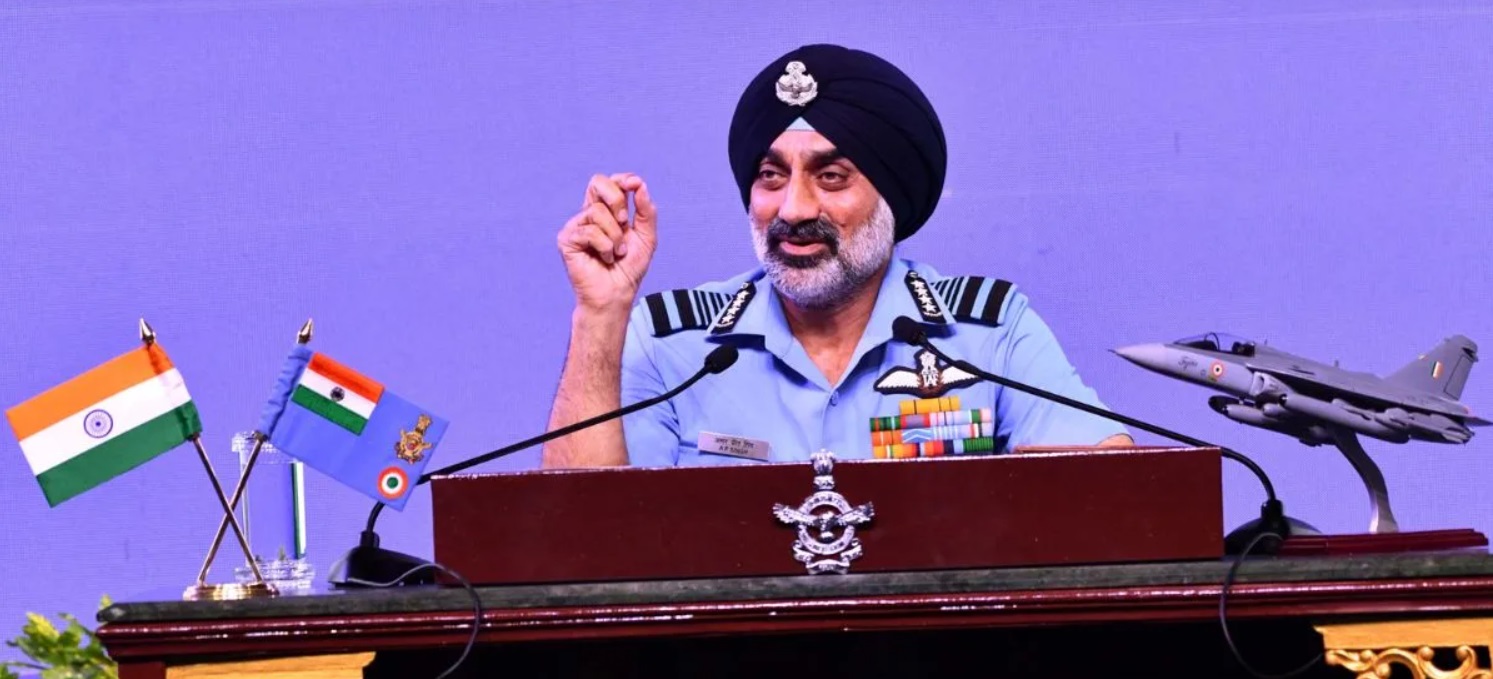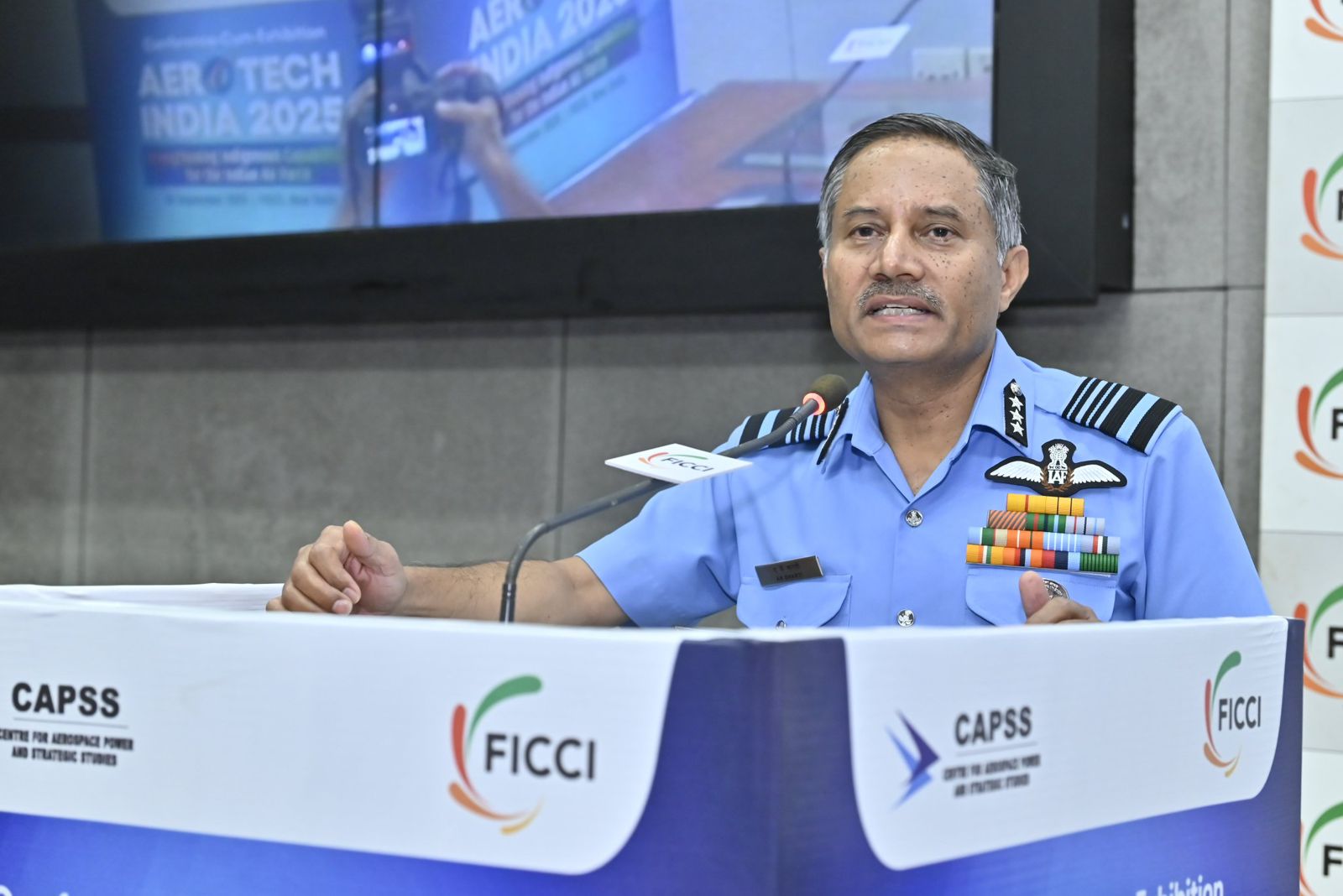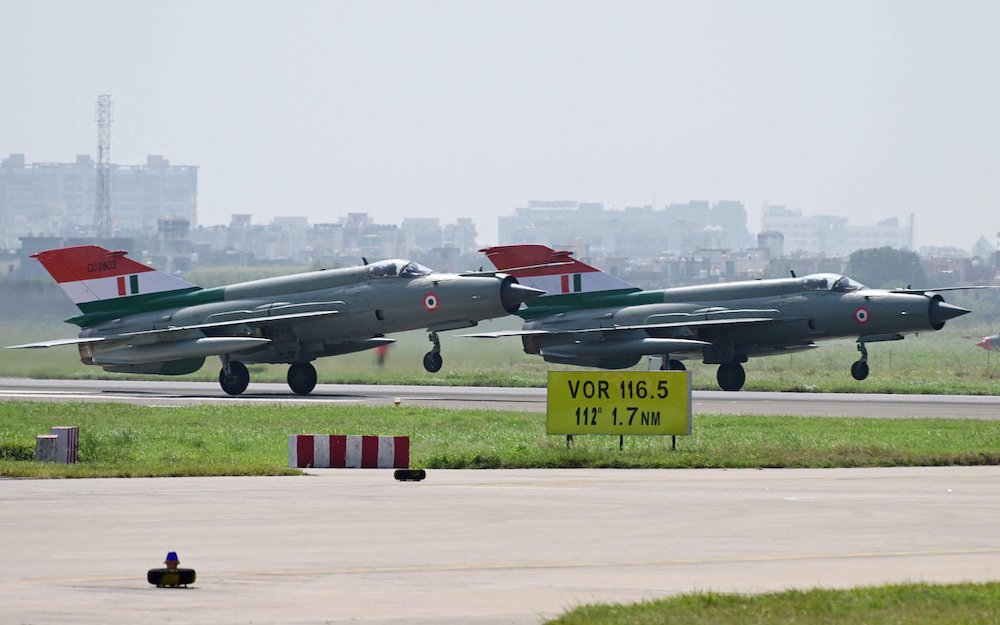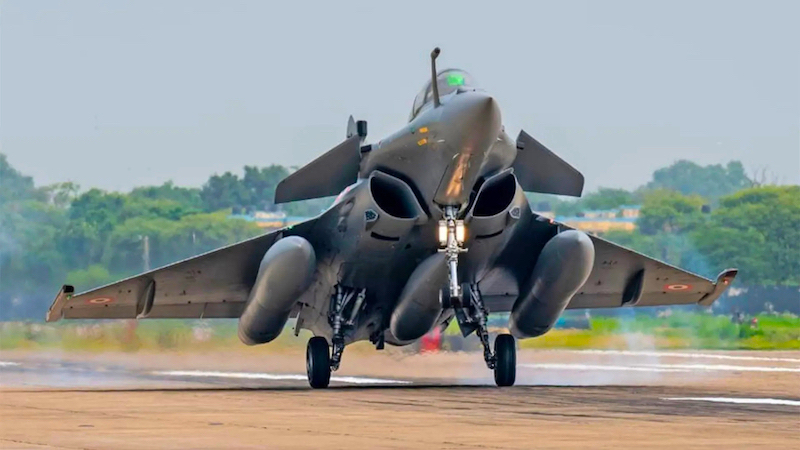 An Indian Air Force Rafale fighter jet. (File photo)
An Indian Air Force Rafale fighter jet. (File photo)
New Delhi: The Indian Air Force on Sunday avoided directly acknowledging possible aircraft losses during Operation Sindoor while maintaining that all pilots have returned safely. This comes even as international media outlets and US officials corroborate Pakistan’s claims of downing Indian jets, including at least one French-made Rafale fighter.
During a triservice media briefing, here in the national capital on Sunday, following an agreement between India and Pakistan to stop hostilities, the director general of air operations, Air Marshal Awadhesh Kumar Bharti, carefully sidestepped direct questions about Indian aircraft losses. When a reporter specifically asked about Pakistan’s claims of shooting down Indian fighter jets, AM Bharti offered a measured response that neither confirmed nor denied the losses.
“We are in a combat scenario; losses are a part of combat,” Bharti stated at the briefing where he was accompanied by his counterparts from the Army and Navy. This cryptic acknowledgment came as the first official comment suggesting possible aircraft losses during Operation Sindoor, which was India’s military response to the April 22 Pahalgam terror attack that claimed 28 innocent lives.
While avoiding specifics about what aircraft India may have lost, AM Bharti emphasized that such information could potentially benefit enemy forces. “If I comment on anything, it will only be [an] advantage [to the] adversary. We don’t want to give him [Sic.] any advantage at this stage,” he explained.
However, he did reassure the nation that “all our pilots are back home,” suggesting that any potential aircraft losses did not result in pilot casualties or captures.
The carefully worded statement appears to be the closest acknowledgment yet from India about potential aircraft losses, following days of claims from Pakistan about downing multiple Indian jets.
Indian Claims of Pakistani Losses
During the same briefing, AM Bharti asserted that India had successfully targeted Pakistani fighter jets during the operation. “We don’t have the wreckage as their (Pakistan Air Force) planes were prevented from entering our airspace. But we have downed a few planes. I have the numbers, and we are getting into the technical details to establish it. But I would not like to reveal the figure at this time,” he stated.
Experts say this statement suggests a mutual exchange of fire resulting in losses on both sides, though the exact figures remain undisclosed by Indian authorities.
Pakistan’s Claims of Shooting Down Indian Aircraft
Pakistan has been vocal about claiming significant victories in the aerial engagement. The country’s defence minister, Khawaja Muhammad Asif, told Reuters that Chinese-made J-10 jets operated by Pakistan had successfully downed three recently acquired French-made Rafale planes. Overall, Pakistan claims to have brought down a total of five Indian warplanes during the aerial confrontations that took place in the intervening night of May 6 and 7.
Pakistan’s director general of Inter-Services Public Relations (DG ISPR) also conducted media briefings claiming successful strikes against Indian military assets. However, India’s Press Information Bureau (PIB) fact-check unit has accused Pakistan of spreading misinformation through doctored videos claiming damage to Indian airfields.
“This is an attempt by Pakistan to mislead its own people by editing and cleverly stitching multiple chunks of a video,” the PIB fact-check unit stated on X. The statement followed accusations that Pakistani officials had shown manipulated footage during media briefings to support their claims.
Pakistani military in its briefing has shown a video clip aired on @IndiaTV News Channel implying that Indian channels have admitted to destruction of Indian airbases.
— PIB Fact Check (@PIBFactCheck) May 12, 2025
This is an attempt by #Pakistan to mislead its own people by editing and cleverly stitching multiple chunks of… pic.twitter.com/eNfzk7SPTM
International ‘Confirmation’
While India has maintained operational secrecy regarding specific losses, multiple international sources have corroborated aspects of Pakistan’s claims. According to Reuters, two US officials confirmed that Pakistan used Chinese-manufactured J-10 aircraft to fire air-to-air missiles that brought down at least two Indian fighter jets. One of these officials specifically mentioned that at least one of the downed aircraft was a Rafale fighter jet.
A French intelligence official separately told CNN that Pakistan had indeed downed at least one Indian Rafale jet. These reports from western sources add significant weight to Pakistan’s claims, even as India remains tight-lipped about specific losses.
The international reports suggest that the Indian jets were downed with long-range Chinese-made PL-15 air-to-air missiles launched from within Pakistani airspace, with the target aircraft reportedly well inside Indian airspace. This detail aligns with AM Bharti’s statement that all Indian pilots have returned safely, as they would have likely parachuted into Indian territory.
Photographic Evidence?
Adding to the complexity of verification, photographic imagery purportedly showing the crash site of a Rafale jet registered as BS 001 has appeared on social media platforms. However, aviation publication FlightGlobal noted that they had identified some discrepancies [archived link] in these images, raising questions about their authenticity.
Awkward discrepancies in Indian Rafale shootdown image https://t.co/IOvmXneZHO pic.twitter.com/H126bkXkdZ
— FlightGlobal (@FlightGlobal) May 9, 2025
Dassault Shares Drop, Chengdu Shares Jump
Meanwhile, Rafale maker Dassault Aviation share price dipped 7 per cent after the India-Pakistan cessation of hostilities. Dassault Aviation stock touched an intraday low of €292 (US$324) on the Paris stock exchange on Monday.
On the other hand, J-10C maker Chengdu Aircraft Industry Group’s (Avic Chengdu Aircraft Co Ltd) shares jumped by 20.01 per cent on Monday to CN¥95.86 (US$13.25) on the Shanghai Stock Exchange Composite Index.
Strategic Implications
The reported success of Chinese-made fighter jets against western aircraft has significant geopolitical implications. US officials are closely observing this combat performance as it may provide insights into how Chinese military technology might perform in potential future conflicts, particularly in the Indo-Pacific region.
Both the Rafale and the variant of the J-10 employed by Pakistan are classified as 4.5-generation fighter jets, which represent some of the most advanced combat aircraft currently in operation. The plausible success of the Chinese-made PL-15 long-range air-to-air missiles against the sophisticated Rafale jets has raised eyebrows among military analysts worldwide.
Pakistan’s foreign minister, Ishaq Dar, told his country’s parliament on Wednesday evening that Chinese J-10Cs were used in what has been described by some sources as “one of the longest dogfights in history.” This claim, if accurate, would mark a significant combat achievement for Chinese military technology.
The manufacturer of the Rafale jets, Dassault Aviation, and MBDA, the producer of the Meteor air-to-air missiles equipped on these aircraft, have not issued official statements regarding the speculated Indian Air Force losses. However, AM Bharti’s carefully crafted statement that “losses are a part of combat” remains the closest statement from Indian officials about the possibility of aircraft losses during the recent conflict.
Disclaimer: India Sentinels cannot independently verify, hence cannot vouch for Pakistani and other international claims on Indian Air Force aircraft losses during Operation Sindoor. It awaits an official statement from the Indian government to clear the ambiguity.


